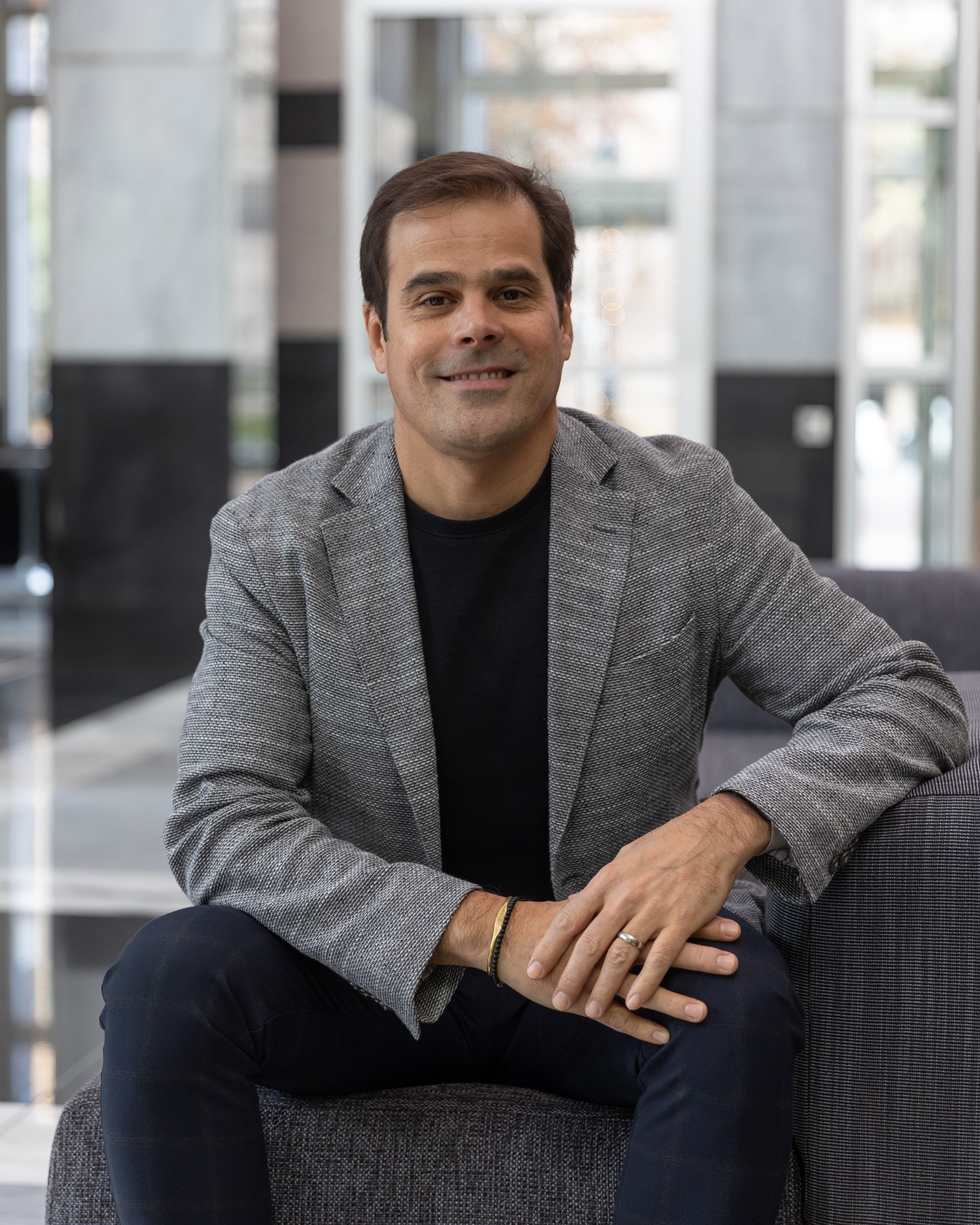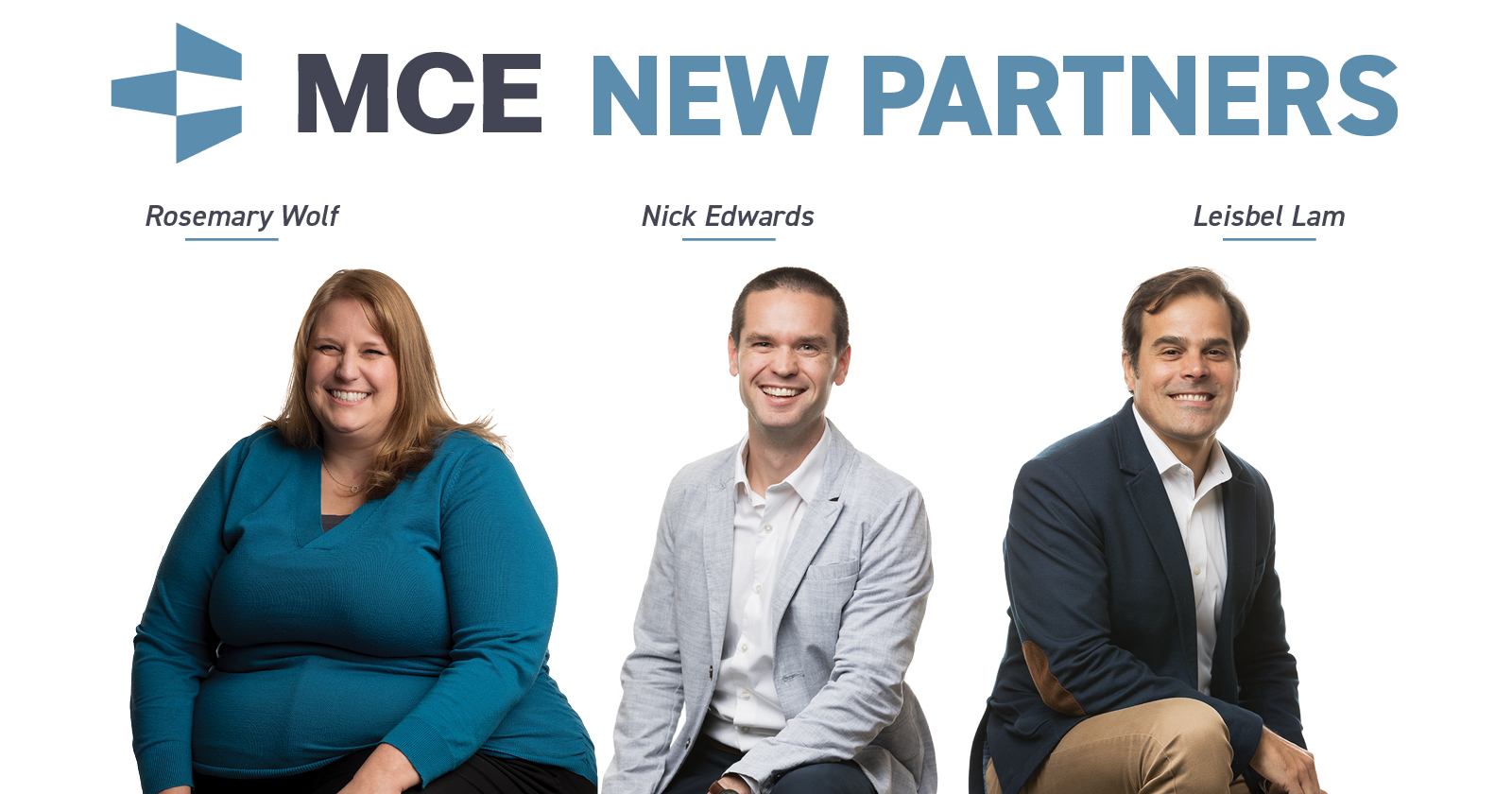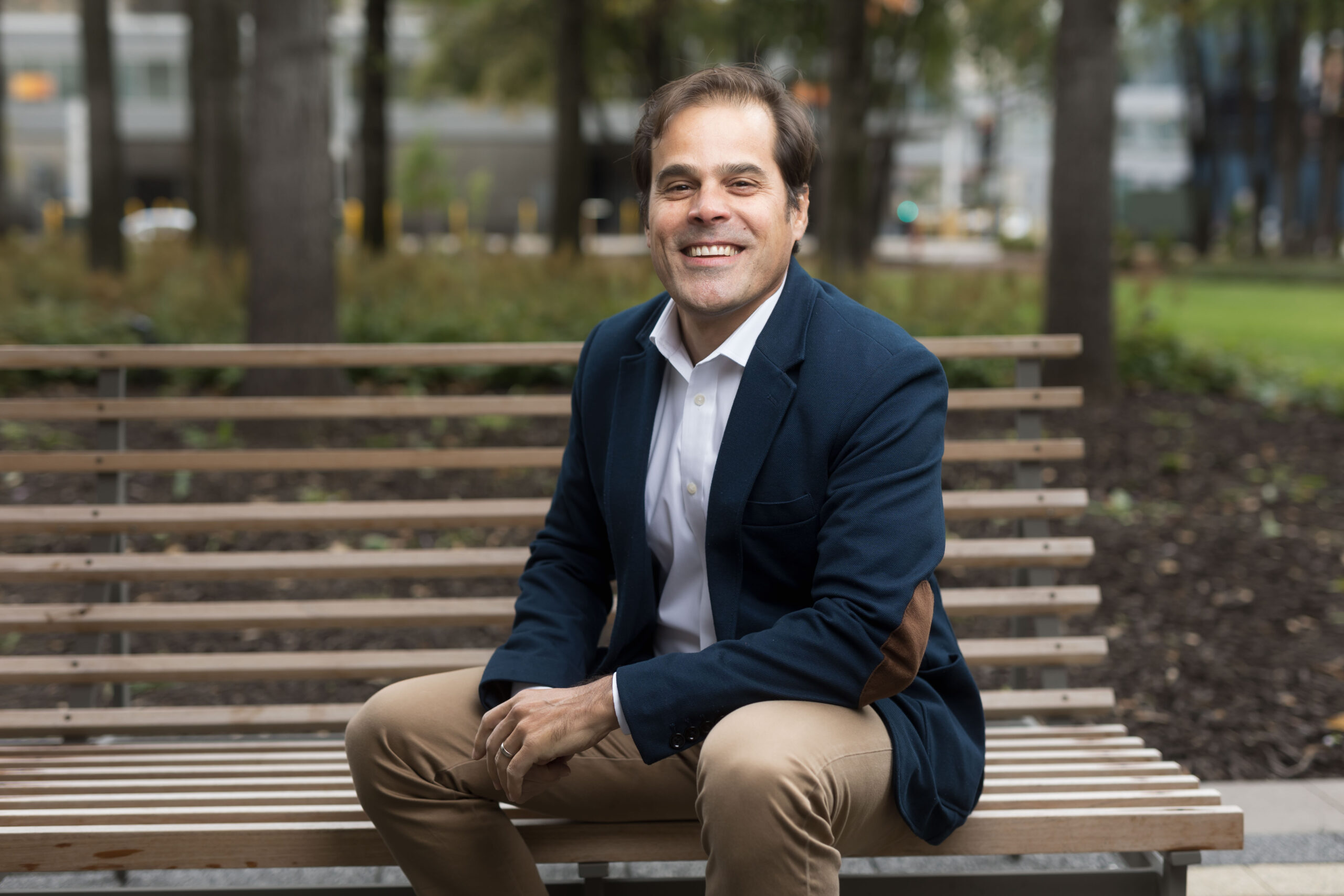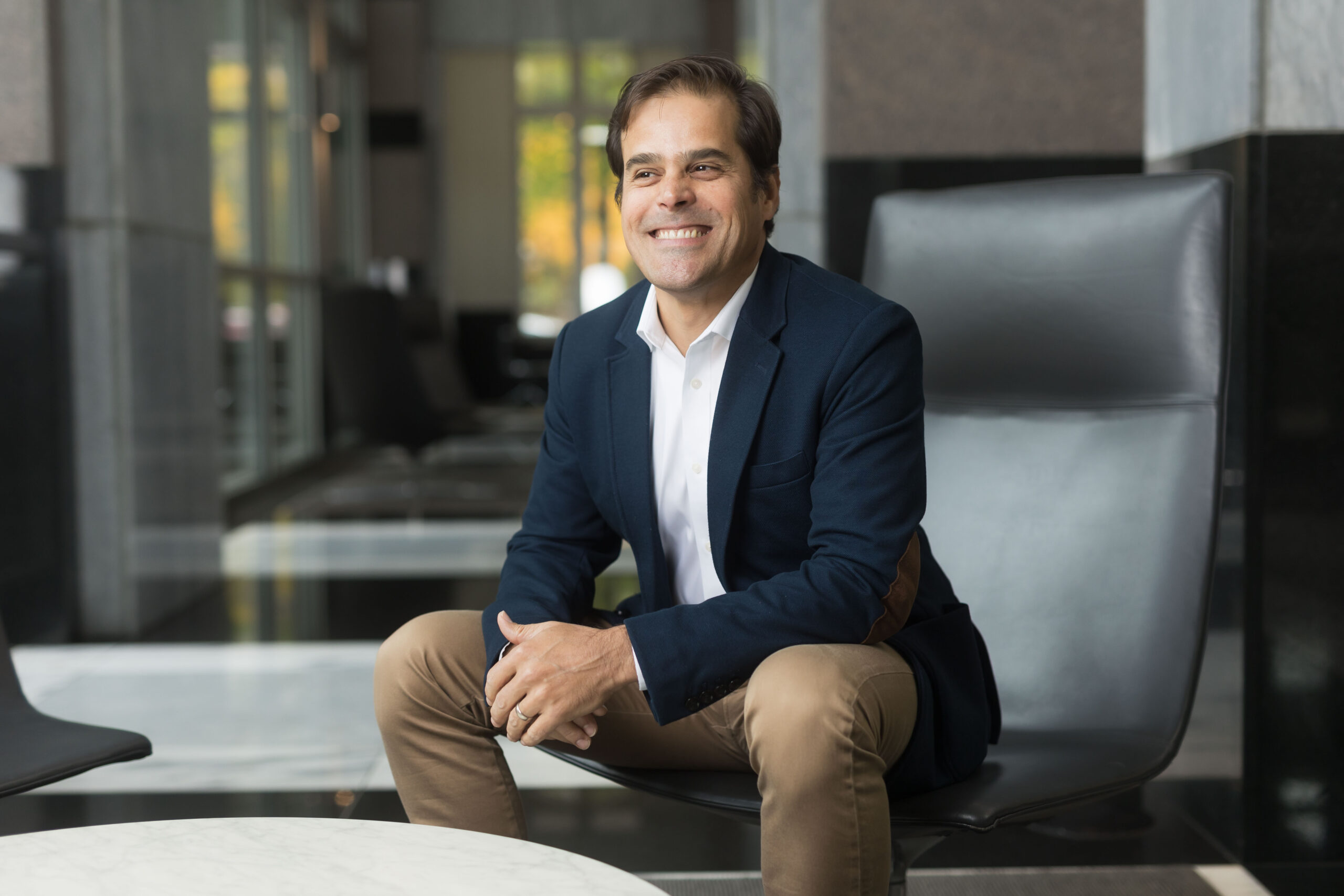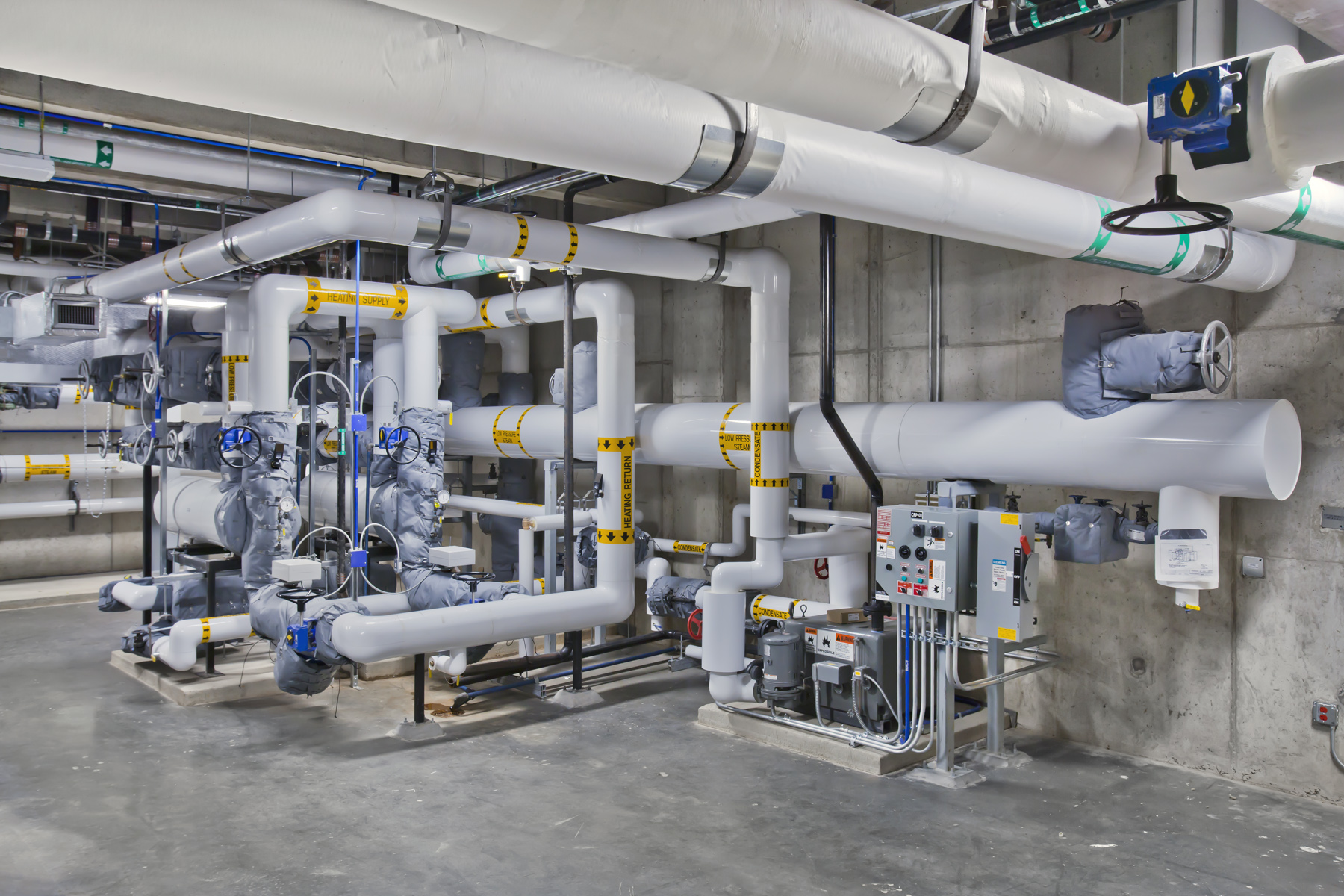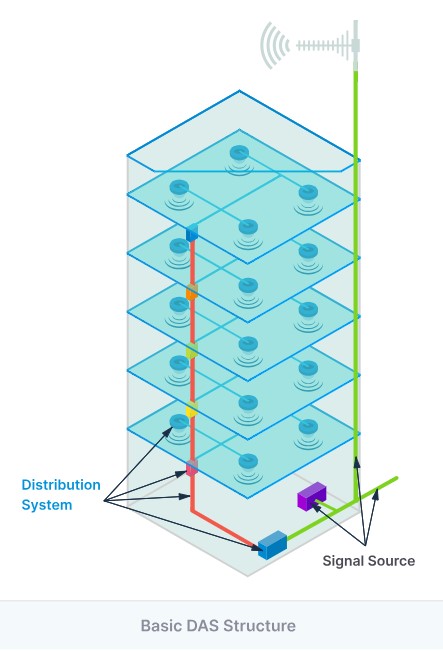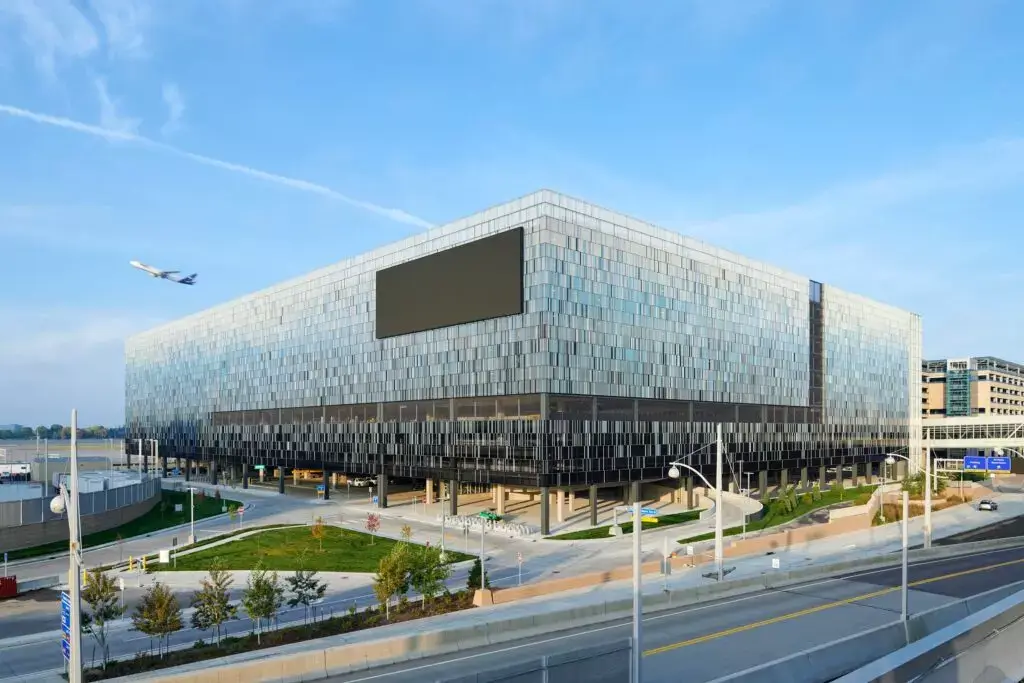
With a prolific engineering design career in aviation environments, we are proud to harbor some of the markets most talented industry leading designers. With a proven reputation of delivering incredible passenger experiences, Kerry Cooley Bruggemann undoubtedly falls into this category. As Principal of Sales and Aviation, Kerry leverages over 16 years of consulting engineering experience to produce exceptional solutions and quality designs.
Kerry has exceptional pride and fierce dedication presented in her engineering solutions. She is a connector, relater and visionary for MCE, with incredible commitment to her clients. We asked Kerry to share her extensive insight into the aviation market.
What is MCE’s experience in this market?
MCE has been involved in aviation design since the late 1990s, early 2000s. About 25 years of experience in aviation mechanical, electrical, and plumbing (MEP) engineering. We have primarily worked at the Minneapolis-Saint Paul International Airport (MSP) and have done all of their MEP engineering over this time frame. We’ve also expanded to a national reach for MEP aviation. We are leveraging our current experience at MSP to bring opportunities for 11 other clients around the country and have had great success and enjoyment in that.
What value does MCE bring to this market?
MCE having 25 years of experience in aviation allows us to bring exceptional value to our clients. We’re able to look at a space and know how it’s going to affect the passengers. We all know the number one customer in an airport is the passenger, and that passenger experience is extremely important. Keeping a terminal open during construction is also a critical part of this experience. We bring our experience in serving a large hub airport, while also leveraging it in smaller airports and facilities. We understand things like ground power, daylight controls, infrastructure, sustainability, and even just restrooms and how these factors may affect the passenger experience and thus affect operations.
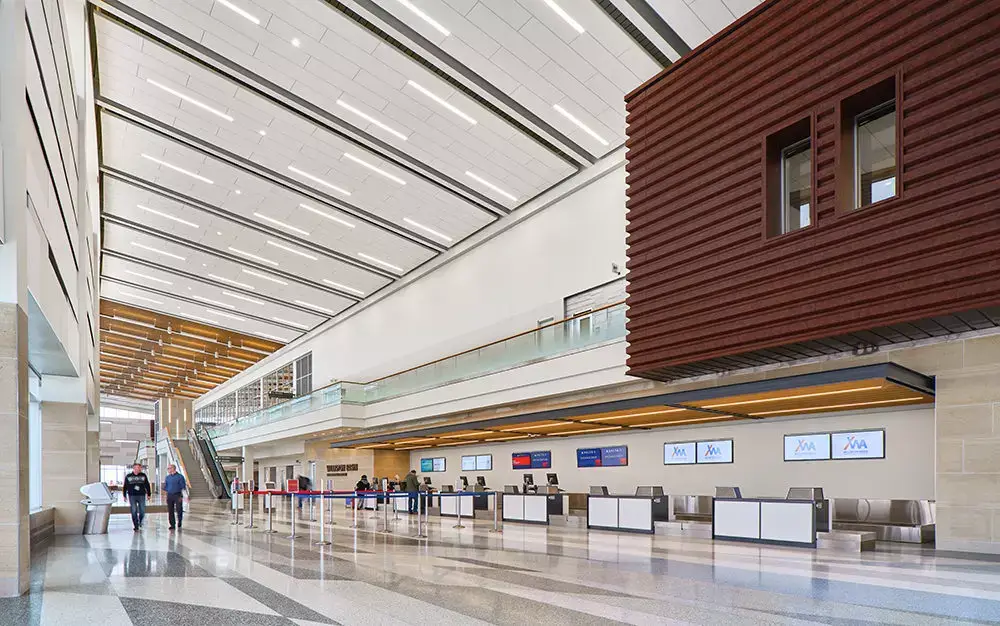
Additionally, we also have a great understanding of all the different types of buildings on an airport campus. Whether that’s a snow removal facility, maintenance facility, or general office spaces. Our history in these different types of airport campus facilities allows us to holistically better serve our aviation clients.
What challenges does designing airport spaces bring?
Designing airports from an MEP perspective equates to designing an entire city. There’s a little bit of every type of space within an airport environment. With that, there’s a multitude of experiences to have. For example, being able to design a multitude of spaces such as restaurants, office spaces, gate lobbies, restrooms, baggage claim, etc. is important. Not to mention many airports also have small data center facilities and capabilities. All the different types of spaces often fall within an airport property.
“Designing airports from an MEP perspective equates to designing an entire city. There’s a little bit of every type of space within an airport environment.”
Additionally, airports run 24/7/365 days a year. Because of this, redundancy and resiliency of the systems equates to failproof MEP designed engineering systems. By doing this, we give clients confidence that their facilities will run smoothly in all scenarios.
How does MCE maintain airport operations during ongoing construction?
MCE’s experience has created opportunities for us to understand how we can phase projects. By putting in temporary conditions, we can ensure facilities continuously operate. This is achieved whether it means installing temporary electrical panels, temporary fire protection risers, or interim heating systems. On a recent project we brought in an external air handling unit to supplement a space. By installing it on the roof during construction, we ensured everything operated correctly.
Understanding how the construction is going to go, we can phase properly. Implementing these integral steps allows our MEP team to ensure the facility keeps running as smoothly as possible. The best version of success in airport construction for MCE is if passengers don’t know there’s construction going on. They’re not affected by the power, the plumbing, their safety (from a fire sprinkler perspective), or the security. All those things being maintained during construction is a sign of success.
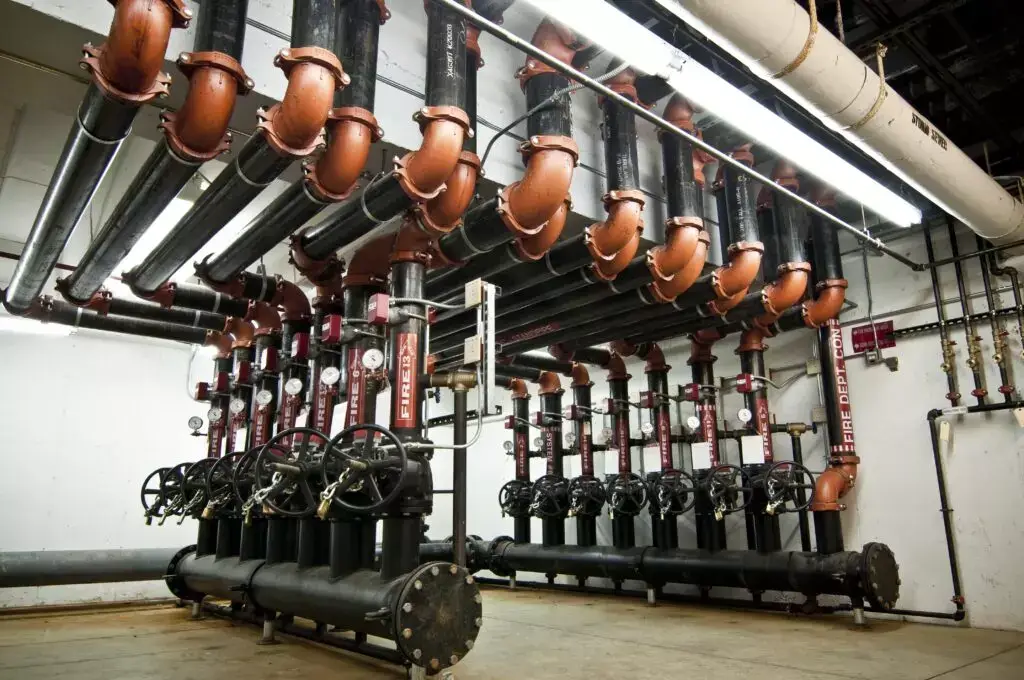
How has MCE solved problems for its clients in this market?
MCE overall loves solving problems; the more complicated the better, and airports are no exception. We’re asking questions like how we can create energy efficient solutions or sustainable options? How can we provide redundant power feeds to a system? How can we take an existing building and make more of it within the current space? MCE has solved and enjoys these types of problems. For example, one of our long-standing programs at the MSP Airport was adding fire protection to the entire terminal. There were bits and pieces, creating a disjointed fire sprinkler system.
The goal of the program was to make sure every square foot, every piece, was protected. Which gives that sense of security for the facility, making sure everything is safe. With that, there’s a lot of standards get created. When things haven’t been there for a long period of time, you have an opportunity to think about things differently had you originally designed it that way. It sometimes poses its own set of challenges, but also creates opportunities to do things as well.
How has MCE mitigated these challenges when it comes to tight deadlines and budgets? What exactly is our process in dealing with those things?
When it comes to aviation design, we know meeting deadlines is very important. If you don’t, it can have a big domino effect, affecting tenants, concessions, and airline operations. Making sure you’re meeting deadlines is paramount to the work that we do. As a result, we have a dynamic and large team that helps us make sure we accomplish any schedule.
“I always tell clients: we can do anything, we can design anything, it’s just a matter of how much you want to spend. The question really becomes, what are the clients’ needs?”
We have over 40 team members who design and engineer our aviation work, which really gives us assurances to make sure we’re prepared to meet any of those deadlines. As far as a budget perspective, I always tell clients: we can do anything, we can design anything, it’s just a matter of how much you want to spend. The question really becomes, what are the clients’ needs? One of MCE’s dedicated unique approaches is creating the right solution. The right solution for the project is going to meet the budget. We ensure we aren’t providing only the most expensive or a cookie cutter solution, but rather a tailored, unique solution that fits our clients needs the best.
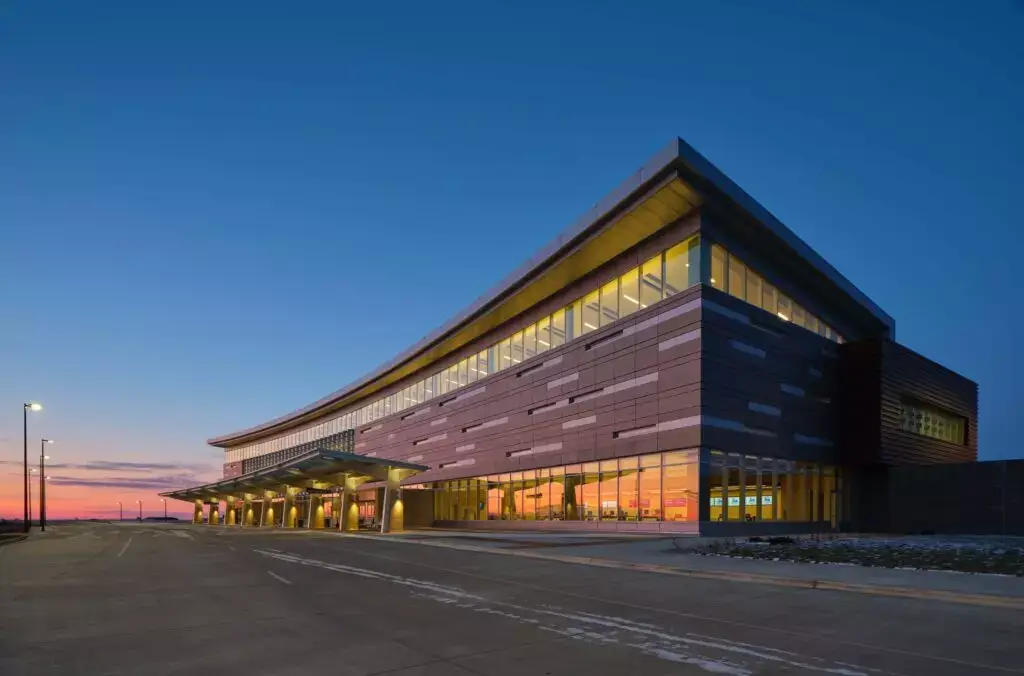
MCE has maintained some incredible long-standing relationships with our clients. Why do these clients continue to choose MCE with their work?
MCE is extremely grateful to have multiple decade long clients, and we continue to have for such long standing times. One of the things that I know is appreciated is we see ourselves as an extension of any of our customers’ teams. Particularly at MSP, we consider ourselves an integral piece of their staff. That’s why we all work together so well, because we’ve been able to create relationships that are built on trust, and an understanding of what the deliverable is that they’re looking for.
Similarly with our architectural and other engineering partners, we look at them as a team member, a part of the same team. We’re not working against each other, but rather collaborating all the time on each project. That’s important to us. Another one of our dedicated unique approaches is that we look to create long-term success for our clients. It’s not a one and done solution for us, we’re always looking for how we can create that long-term success for our clients.
What does sustainability look like in the aviation market in new spaces and in pre-existing spaces?
Sustainability in aviation is incredibly prominent. Carbon impact of the aviation industry is something that is on everybody’s mind. Airplanes, tugs, and baggage handling equipment consume a lot of fuel. Then there’s the buildings themselves. They’re big buildings that operate around the clock. If we can start at the building level, we can start to make changes in waves throughout the aviation industry. When it comes to new buildings, we have a lot of opportunities to make the structure as green as possible. There are elements in airports that present unique challenges.
“Carbon impact of the aviation industry is something that is on everybody’s mind […] if we can start at the building level, we can start to make changes in waves throughout the aviation industry.”
For example, jet bridges are open and closed all day long. Hundreds of doors welcome passengers in and out every day. These factors affect the buildings’ HVAC systems. We make sure we are designing to accommodate factors like this and start to make a positive impact. Other issues can be mitigated, as you think about the glazing, the roof systems and the insulation to make sure that buildings are as green as possible. Additionally, there’s a lot of opportunities with advancing technologies like heat pumps and geothermal. When incorporated into larger buildings and facilities, we really make an impact on the carbon output coming from airports.
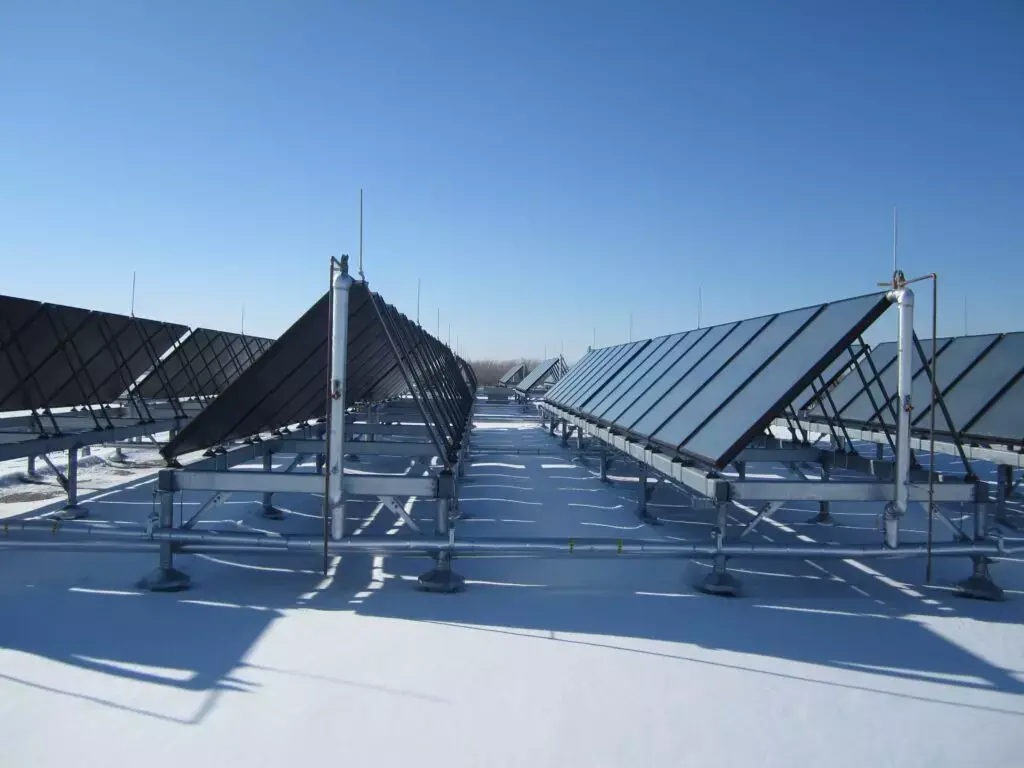
On existing spaces, the challenge is different. What’s great about those is that you know what your current usage of energy is, and so know what you’re working with. You have a pretty good bench line of how to improve. Although it can be more difficult to create those solutions from a physical standpoint, there continues to be a lot of opportunities. A large amount of aviation infrastructure was built in the 60s, 70s, and 80s. This infrastructure needs and has a benefit from being upgraded. That can be simple changes like equipping LED lighting, putting in day lighting controls, or even occupancy controls.
Let’s use occupancy controls as an example. An airport itself is a building that ebbs and flows all day long income the passengers. They fill up the space, utilize the space, and then vacate in very short timeframes. As a result, occupancy sensors can be incredibly effective in airport terminals to turn off lighting when no ones in those spaces. With this change, we can still create a welcoming environment for passengers, so that they feel safe and comfortable coming into space. It’s just one example of sustainability opportunities in existing space.
What does the future look like in the aviation market, with new technologies and new opportunities?
One thing I know about aviation is that it won’t slow down anytime soon. If anything, we may see other modes of transportation popularize in flight, that we currently don’t have. Among other technological advances, the evolution of drones makes ideas like Uber Air a real possibility. From a theoretical standpoint this has huge potential, but there are also smaller technologies. We’re seeing bag checking and baggage handling systems evolving to something totally different. Even just the way passengers are being processed. In the 21 years from 911 to today, we’ve seen major changes in how passengers flow through a terminal. Security is completely different, resulting in the usage of space being different.
“One thing I know about aviation is that it won’t slow down anytime soon.”
The utilization of restrooms is continuously evolving, improving the passenger experience. That’s one of the things that I think is a huge opportunity in aviation design. Creating an equitable and welcoming environment for everybody in these spaces. Whether it’s someone who’s hearing impaired, visually impaired, mobility impaired, or it just wants to bring their true authentic self to the travel experience, airports can do and continue to do a better job of welcoming everyone to those spaces.
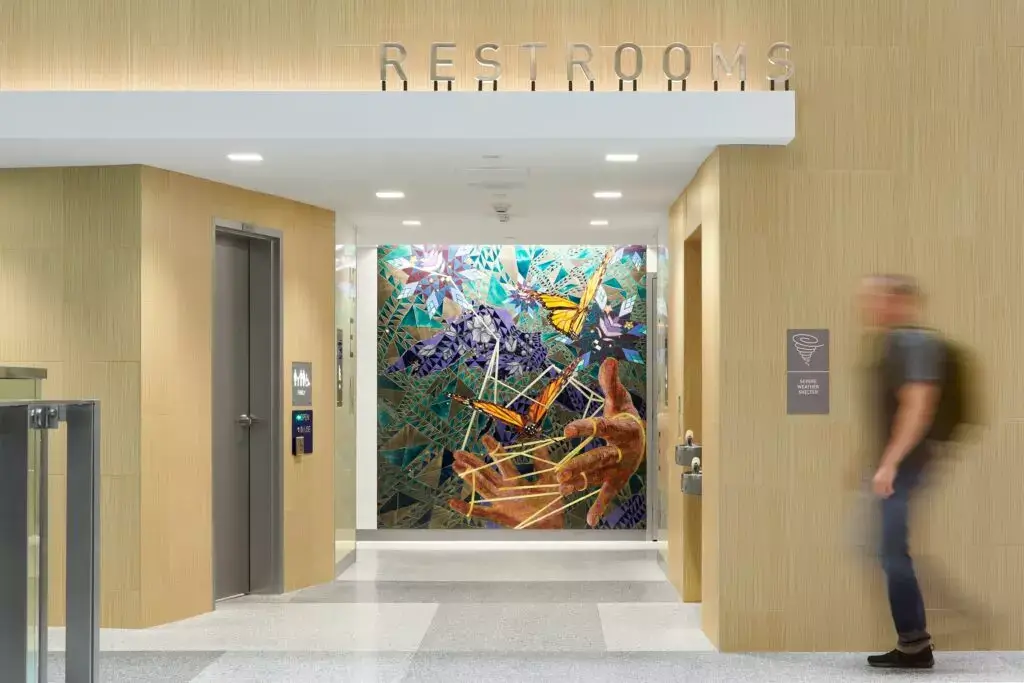
In our restroom design, we’ve talked about creating a restroom of the future. Essentially, this is many pods of individual unisex restrooms, each room having a urinal, toilet, sink, baby changing station, nursing area, and all the things you would need within that space. However you’re coming to the restroom, use the space comfortably, and go on your merry way. Packaging everything into one great space creates an opportunity to make a more welcoming environment for everybody. Another example of equity is the difference between business travel and leisure travel. How do we create a clear path of travel for folks throughout the terminal? One of those things even just being the lighting. How do we light a space so that it’s naturally welcoming folks to the space they need to go to next. A business traveler has an instinct about where it is they would go next, but a leisure traveler may not. Making that experience seamless for both is important.
